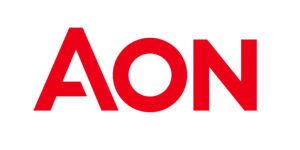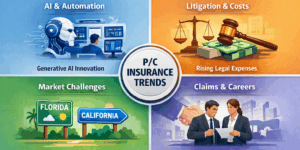It didn’t surprise anyone in the industry when insurance was called “one of the sexiest categories in tech” last year in Fortune magazine.
Executive Summary
While only a handful of auto insurers have embraced the first wave of innovation in the insurance industry around streamlined buying experiences, two more waves are coming up quickly—underwriting based on new data sources and embedded insurance, writes Kin Insurance CEO Sean Harper. Jumping to the third wave isn’t impossible, but it’s harder than it seems, he believes.Insurance is already a huge part of people’s lives and the economy. You don’t have to work in insurance for it to meaningfully impact your life in some way.
It makes sense that investors are taking a real interest. According to Crunchbase, U.S. insurance and InsurTech companies secured almost $5 billion in funding by mid-December 2019, and that number is only projected to keep growing. After all, insurance is an inherently digital product—but the industry needs to evolve to deliver on that potential.
The first wave of insurance tech began 20 years ago when the auto insurance industry began using technology to streamline the purchase experience and expense ratio. Consumers now could buy auto insurance directly and online from Progressive, GEICO and Esurance, similar to the experience of buying other financial products like credit cards. Esurance eventually sold for more than $1 billion, and over that time, GEICO has captured a significant amount of auto insurance market share, moving from less than 3 percent in the late 1990s to 13 percent in 2018.
The first wave still hasn’t reached much of the insurance industry. Most auto carriers are unable to replicate what GEICO, Progressive and Esurance accomplished and remain dependent on comparison shopping sites and digital brokers such as Zebra, Coverhound, Goji and Matic to approximate the experience. Those solutions still have high expenses and manual processes behind the scenes.
Outside of auto insurance, the first wave hasn’t reached other lines at all. The user experience and the accompanying high expense ratios haven’t changed for 100 years. For example, nearly zero percent of homeowners insurance is sold direct and homeowners expense ratios average in the 30s. Compare that to the best auto companies that have expenses in the mid-teens.
The second wave of innovation will make use of new data sources to price and underwrite differently. The bar is significantly higher because both startups and incumbents lack reliable data from which to make decisions. Incumbents have plenty of data on the dependent variable (claims), but they don’t have historical data on the independent variables coming from new data sources—either because the data sources did not exist at the time or were not captured and stored.
Second-wave innovation is happening first in auto insurance because having a first-wave advantage is not sufficient differentiation anymore for a newcomer. For other lines, the second-wave winners will either be the first-wave companies that are now using their cost, UX and distribution advantage to gain a foothold while gathering the data necessary to drive second-wave innovation, or they will be the next wave of InsurTechs that start after the first wave has played out.
The third wave will follow the payments and lending industries and see insurance become embedded in other contexts. In some cases, insurance may no longer be sold as a standalone product but be part of a larger value proposition involving another product. For example, auto leasing is delivered by car manufacturers as part of the car and payments have largely been subsumed into point-of-sale software.
Many newcomers wish to jump straight into the second or third wave, which is possible but harder than it seems because it requires also developing leading first-wave capabilities: good UX, low-cost infrastructure and direct customer relationships. In most lines of insurance, such capabilities are non-trivial to develop and are not available off the shelf from software vendors or legacy partners.





















 Northern California Flooding This Weekend Caused by Heavy Rain, High Tides
Northern California Flooding This Weekend Caused by Heavy Rain, High Tides  Carrier Management’s 2025 Top Features (Reader’s Picks Unlocked)
Carrier Management’s 2025 Top Features (Reader’s Picks Unlocked)  California Workers Comp Combined Ratio for 2024 Highest in 20-Plus Years
California Workers Comp Combined Ratio for 2024 Highest in 20-Plus Years  Heating Fuel Haulers Temporarily Exempt From Drive Time Limits
Heating Fuel Haulers Temporarily Exempt From Drive Time Limits 




